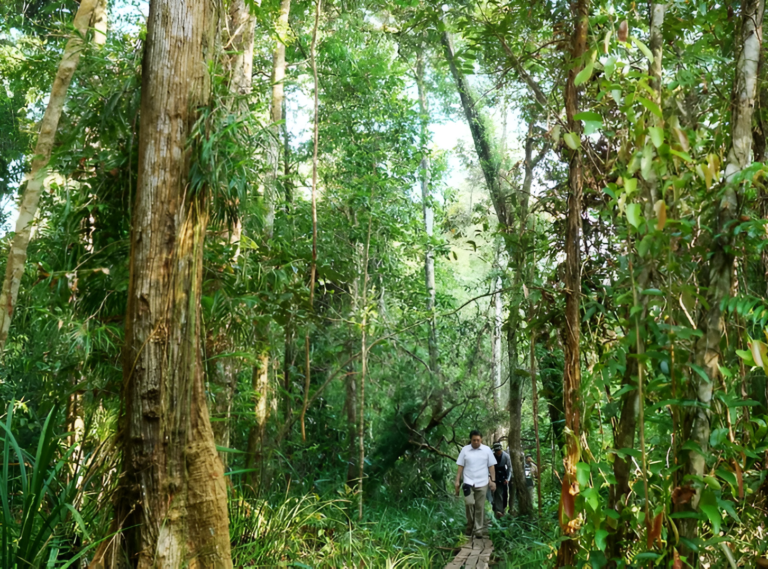Author:
IBC’s Team
14 August 2024
Prior to the ETS and carbon tax, Indonesia has been familiar with the Voluntary Carbon Market (VCM). In essence, VCMs is a type of carbon market in which organizations voluntarily purchase credits from projects that (i) prevent CO2 emissions, (ii) help reduce emissions, or (iii) permanently remove emissions from the atmosphere to offset some or all of their own carbon emissions. Standard setters verify these projects using different methods before issuing carbon offset credits as the issued products. There are already multiple active and registered Nature-Based Solutions (NBS) and Renewable Energy (RE) projects that function under the Voluntary Carbon Market (VCM) model’s offsetting mechanism. The following serve as examples of the realization of the Voluntary Carbon Market.
1) Katingan Mentaya Project
Katingan Mentaya Project by PT Rimba Makmur Utama comprises a restoration and acacia plantation project spanning 157,875 hectares in Central Kalimantan and is one of the VCM pioneers, established since 2010. The project has succeeded in producing 7.5 million certified carbon credits each year by providing carbon conversion and GHG emission reduction reserves for more than 447 million tonnes of CO2 over 60 years, benefiting companies across Indonesia.
Katingan Mentaya Project, the world’s biggest conservation program from the emission reduction angle

2) Pertamina Geothermal
PT. Pertamina Geothermal Energy (PGE) Tbk, a subsidiary of Indonesian state-owned oil and gas company Pertamina, is actively participating in the carbon trading market. PGE currently oversees 15 work areas with a combined geothermal capacity of 1,877 MW (including Joint Operation Contract – JOC), potentially reducing carbon emissions by approximately 9.7 mtCO2e/year. Under the 15 work areas, 7 of them are PGE Carbon Credit Projects, which encompasses not only CDM but also VCS and the Gold Standard.
The company has successfully earned a substantial sum of revenue through carbon credits, amounting to US $747,000 or approximately IDR 11.18 billion. The income derived from carbon credits can be attributed to two geothermal power plants, namely PLTP Ulubelu Units 3 and 4, as well as PLTP Karaha Unit 1. These power plants have collectively contributed to the reduction of approximately 1.7 million tons of carbon emissions. This substantial reduction spans from the moment these power plants commenced commercial operations up until the early months of 2020.
3) ICDX Indonesian Carbon Market Platform
The ICDX Group, a commodity exchange center, has launched a trading platform for carbon that participates on the Indonesian carbon market which uses MetaTrader5, the most used platform used by global traders, and the Cerebro ECN Matching Engine that incorporates over 100 instruments in the Matching Engine with the market depth of up to 10 levels to create an equitable market. In translating the emissions to a certificate, ICDX utilizes the Electronic Warehouse Receipt Trading, a web-based software system that will dematerialize physical commodities into an electronic proof of ownership and integrate the commodity on the Exchange.
4) Other notable efforts
The Clean Development Mechanism (CDM) in Indonesia has completed 215 projects, of which 37 of the projects have acquired a Certified Emission Reduction (CER) that have reduced 10.1 million tonnes CO2 emissions. In addition, the Joint Credit Mechanism (JCM) has reduced 329.5 thousand tonnes of CO2 through 106 projects in Indonesia.


